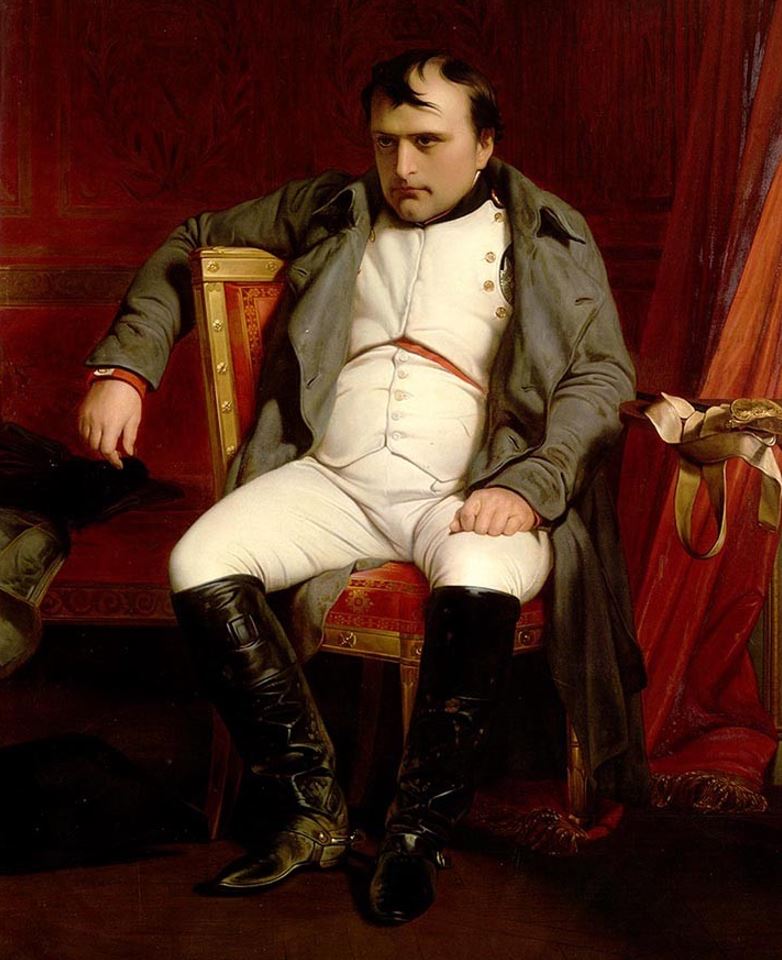The French are still divided about this dubious figure, and that’s because he was one of the most controversial politicians in French history.
Napoleon Bonaparte (1769-1821) rose out of the ashes of the French Revolution and became highly popular following numerous successes during the Revolutionary Wars.
He became the First Consul of the Republic between 1799 and 1804 and crowned himself as French Emperor in 1804.
The cunning politician and military leader held this position until his fall in 1814 and briefly upon his return from exile in 1815 as well.
The reforms he made still linger in European politics today, but his megalomaniac tendencies make his legacy disputed among historians.
There are no pictures of the man, but some of the most famous Napoleon paintings are so realistic that we can perfectly see what the man looked like.
Painted by a handful of renowned artists of the 19th century, here is a list of some of the best-known artworks depicting Napoleon Bonaparte.
1. The Coronation of Napoleon – Jacques-Louis David
- Date created:
- Dimensions: 621 x 979 centimeters (244.48 x 385.43 inches)
- Location: Louvre Museum, Paris, France
The Coronation of Napoleon is a monumental painting by Jacques-Louis David (1748-1825), a Neoclassical artist who became the official painter of the French Emperor in the early 19th century. David had always been a fan of the revolution and his talent brought him to the upper levels of politics.
Napoleon had commissioned the painting himself in September 1804, about 3 months before this event in Notre Dame Cathedral in Paris took place. The French painter took a number of liberties as he included several people who were not there, including Napoleon’s mother. The Emperor himself can be seen holding up his crown in the center.
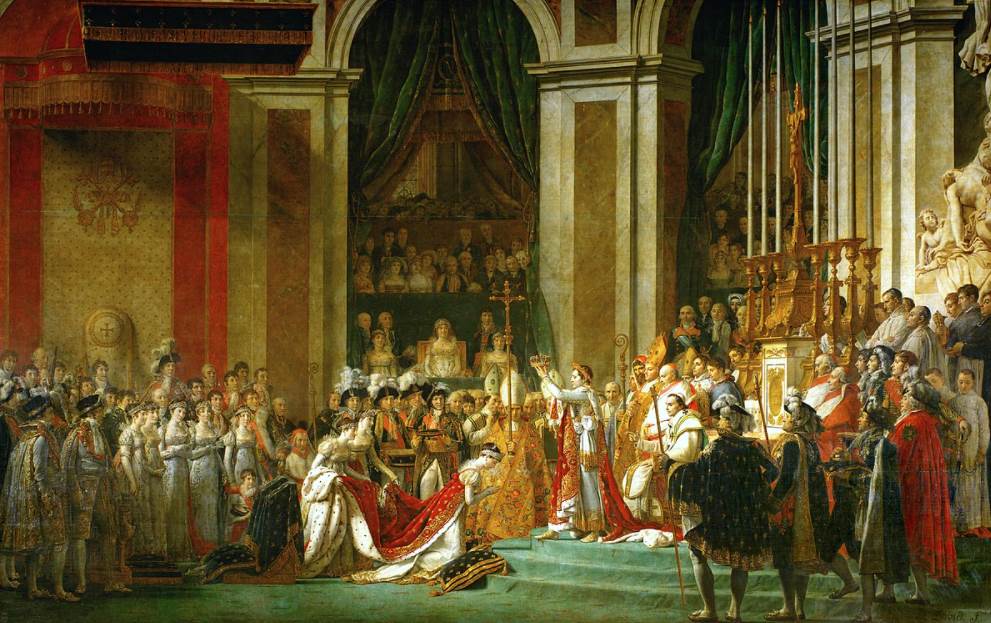
2. Napoleon I on His Imperial Throne – Jean-Auguste Dominique Ingres
- Date created: 1806
- Dimensions: 259 × 162 centimeters (102 × 64 inches)
- Location: Musée de l’Armée, Paris, France
Napoleon I on His Imperial Throne is a painting by Jean-Auguste Dominique Ingres (1780-1867) that depicts the French Emperor wearing his Imperial costume. This is the same costume he wore during his coronation, the event depicted in the huge painting by Jacques-Louis David.
Ingres was another Neoclassical artist who focused on historical works and who was trained in the studio of David. The style of both artists is fairly similar and focuses on a realistic depiction with all bells and whistles included. This provides a great depiction of how the French politician looked in real life.
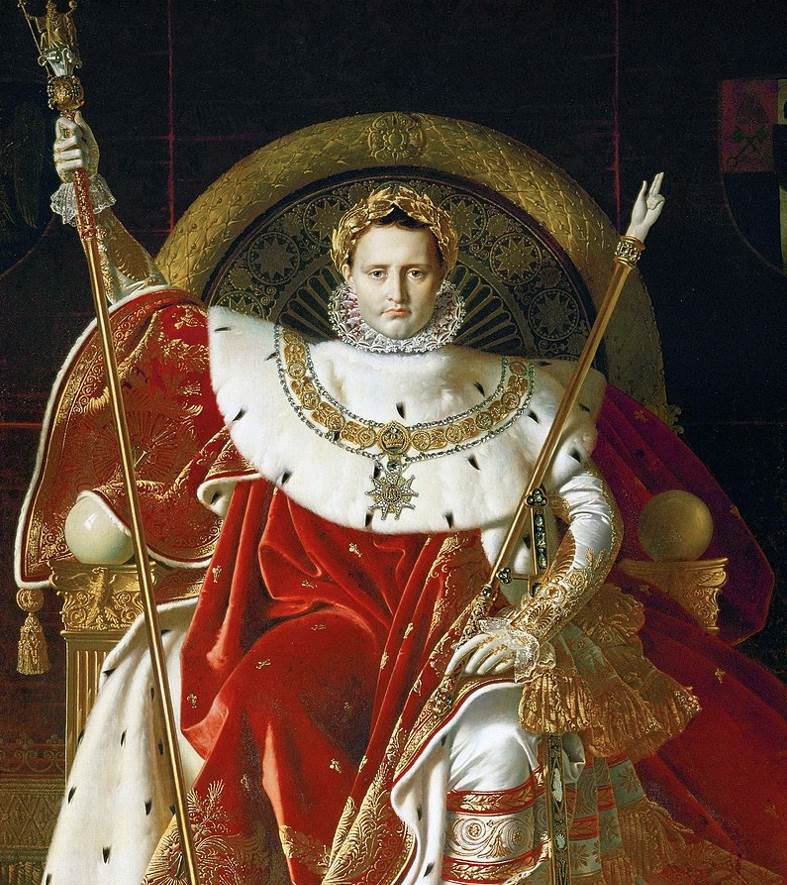
3. Napoleon Crossing the Alps – Jacques-Louis David
- Date created: 1801
- Dimensions: 261 × 221 centimeters (102.33 × 87 inches)
- Location: Château de Malmaison, Rueil-Malmaison, France
Napoleon Crossing the Alps is arguably one of the most iconic Napeolon paintings ever completed. It’s another work by Jacques-Louis David that was remarkably commissioned by Charles IV (1748-1829), the King of Spain between 1798 and 1808. It depicts an idealized version of Napoleon’s crossing of the Alps at the Great St Bernard Pass in May 1800.
The painting became so popular that David completed 5 different versions of it between 1801 and 1805. The original version was brought to Spain upon completion and remained there until 1812. It hung at Point Breeze estate near Bordentown in New Jersey for multiple decades, the location where Joseph Bonaparte exiled himself after the Fall of his brother Napoleon.
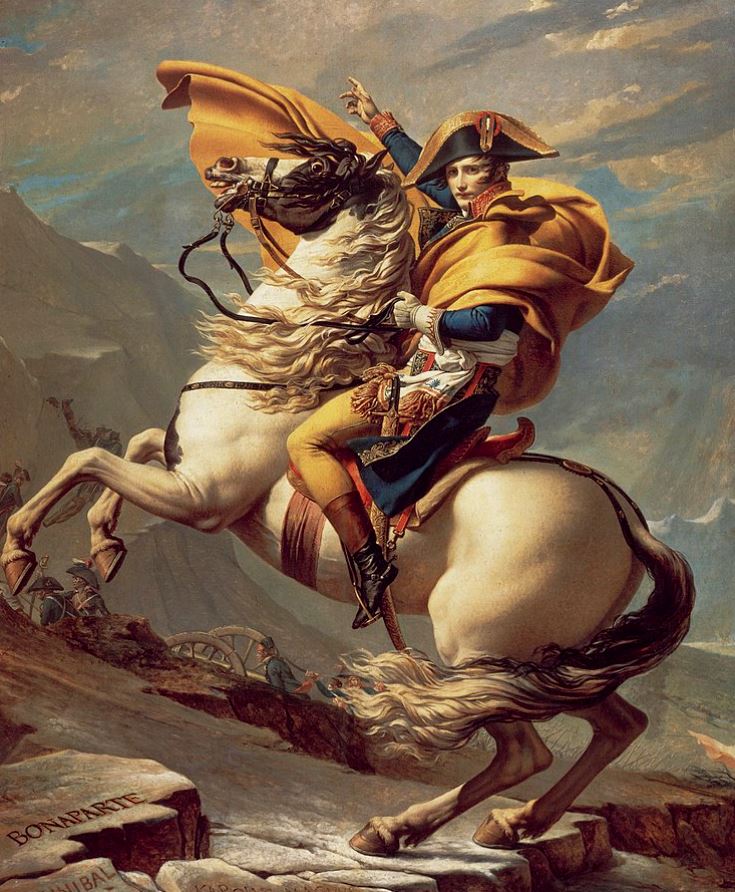
4. Bonaparte at the Pont d’Arcole – Antoine-Jean Gros
- Date created: 1796
- Dimensions: 130 × 94 centimeters (51 × 37 inches)
- Location: Palace of Versailles, Versailles, France
Bonaparte at the Pont d’Arcole is a Napoleon painting that depicts a younger version of the French military commander. It was painted by Antoine-Jean Gros (1771-1835), another student of Jacques-Louis David who managed the earn the patronage of Napoleon.
It depicts General Bonaparte who is leading his troop at the Battle of Arcole in November 1796. This battle was fought between France and Austria during the War of the First Coalition and resulted in a French victory. It’s one of the reasons why Napoleon became so popular in the late 1790s.
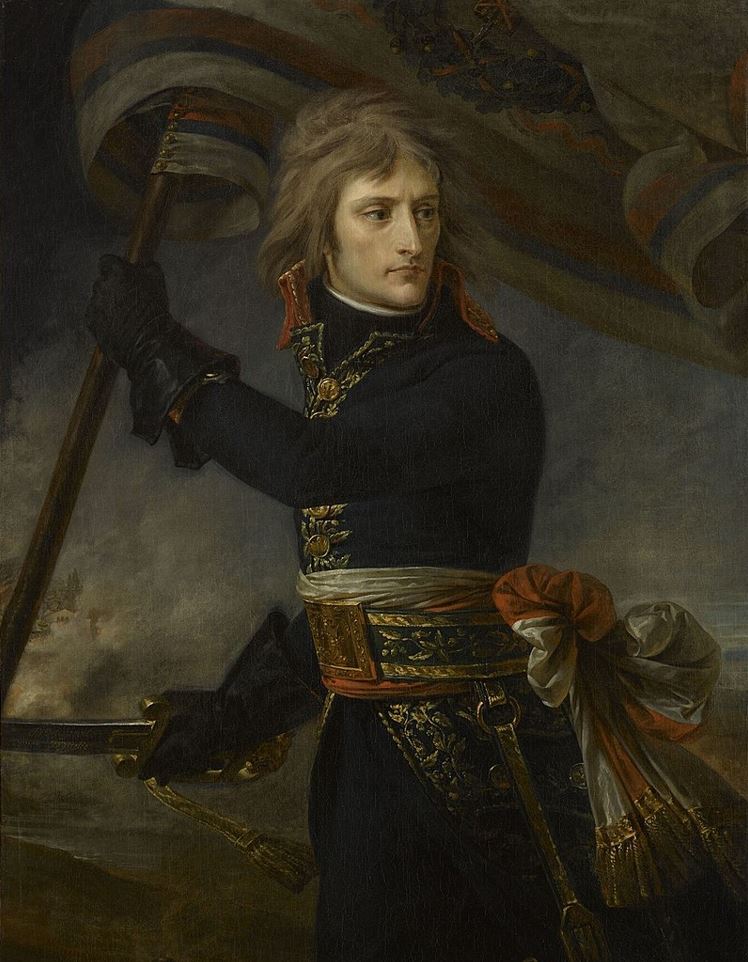
5. Emperor Napoleon in His Study at the Tuileries – Jacques-Louis David
- Date created: 1812
- Dimensions: 203.9 × 125.1 centimeters (80.3 × 49.3 inches)
- Location: National Gallery of Art, Washington D.C., United States
Emperor Napoleon in His Study at the Tuileries is the title of yet another Jacques-Louis David painting that depicts the French Emperor. He is wearing his military uniform and stands inside his study at the Tuileries Palace in central Paris, a structure that was destroyed by the Paris Commune in the early 1870s.
This painting was commissioned by a Scottish nobleman named Alexander Hamilton (1767-1852), the 10th Duke of Hamilton, a man who greatly admired the French leader. Archibald Primrose, 5th Earl of Rosebery bought it in 1882 and it moved to the NGA in Washington D.C. in 1952.
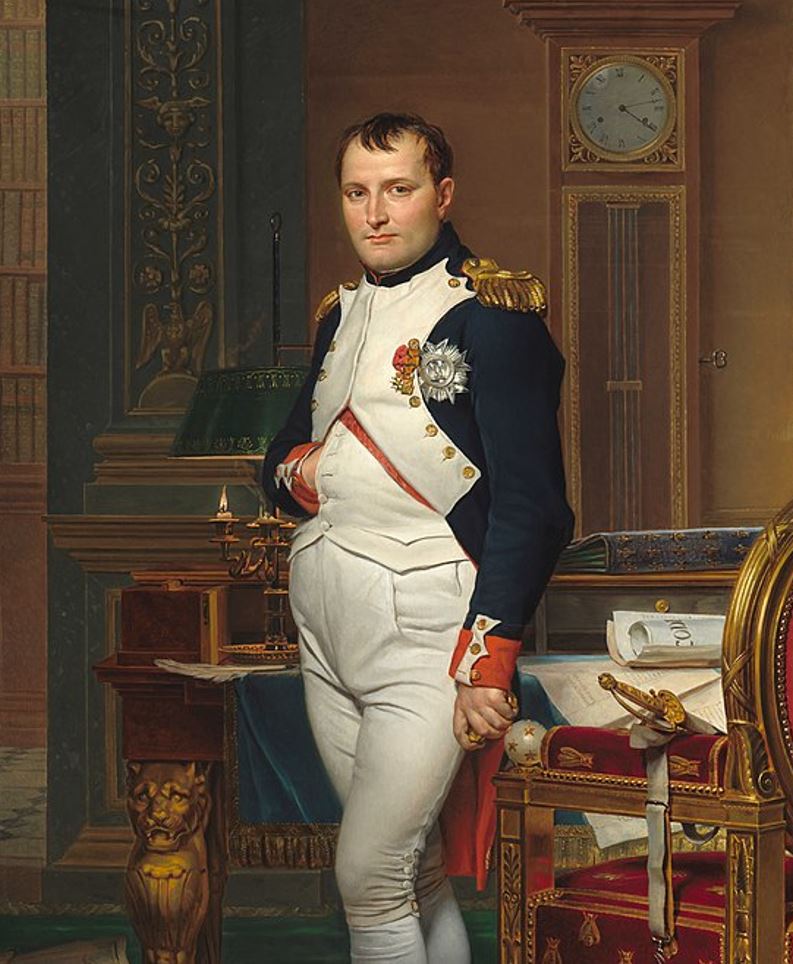
6. Marriage of Napoleon and Marie-Louise – Georges Rouget
- Date created: 1810
- Dimensions: 185 x 182 centimeters (72.8 x 71.6 inches)
- Location: Palace of Versailles, Versailles, France
The Marriage of Napoleon and Marie-Louise depicts an event that actually never took place, at least, not in the image depicted in this remarkable work of art by Georges Rouget (1783-1869). Napoleon did marry Marie-Louise (1791-1847), an archduchess of Austria and grand-niece of the executed Marie Antoinette.
It was a proxy wedding that took place on March 11, 1810, and the 19-year-old girl hated the idea of it. She did, however, change her mind after she met Napoleon and liked his personality, as well as the fact that he dearly loved her. It remains a remarkable political move as he fought Austria just over a decade earlier.
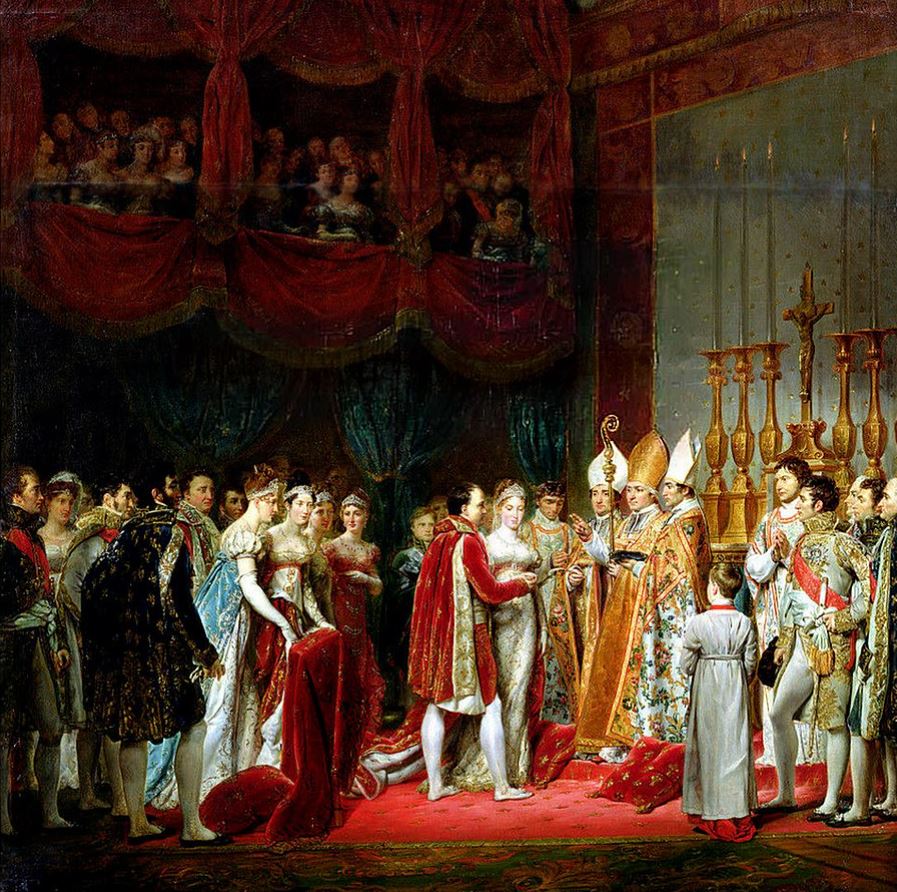
7. Bonaparte, First Consul – Jean-Auguste-Dominique Ingres
- Date created: 1804
- Dimensions: 226 × 144 centimeters (89 x 57 inches)
- Location: Curtius Museum, Liège, Belgium
Bonaparte, First Consul is another remarkable portrait of Napoleon Bonaparte by Jean-Auguste-Dominique Ingresduring the early phase of his rise to power. It features the famous hand inside the waistcoat pose, something that emphasizes strength and stability.
The painting was commissioned by the city of Liège when Napoleon visited it in early August of 1803. A large crowd gathered in the city in modern-day Belgium but unfortunately, Ingres didn’t manage to have the Consul sit for him. He based this portrait on an earlier work by Antoine-Jean Gros.
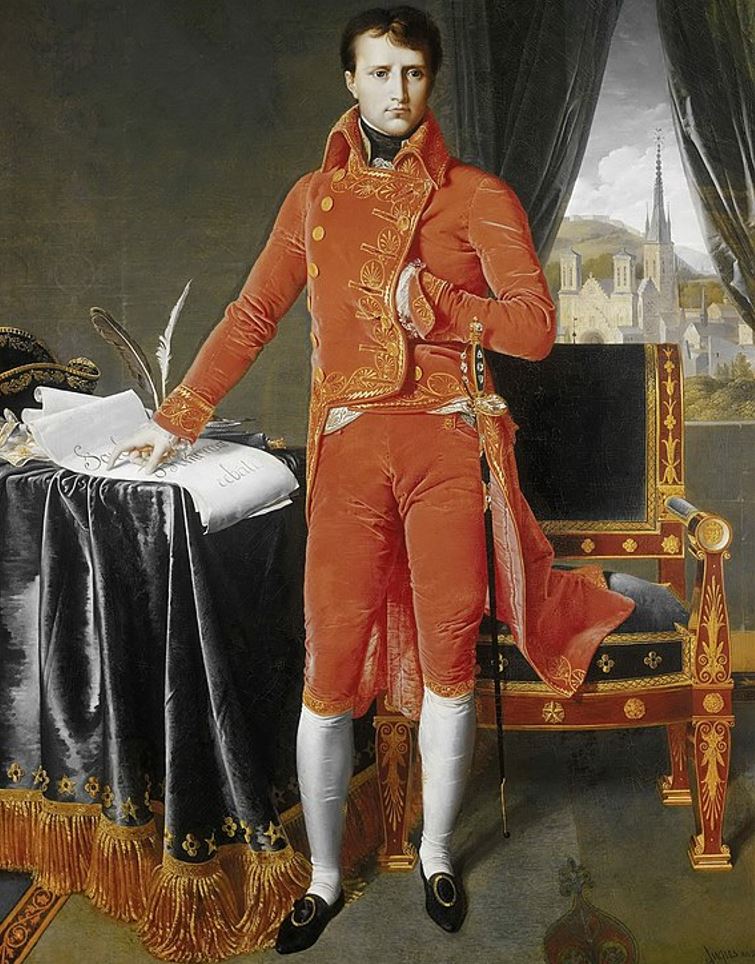
8. War. The Exile and the Rock Limpet – J.M.W. Turner
- Date created: 1842
- Dimensions: 79.4 x 79.4 centimeters (31.25 x 31.25 inches)
- Location: Tate Britain, London, United Kingdom
War. The Exile and the Rock Limpet is the title of a painting by J.M.W. Turner (1775-1851), an English artist who lived during the Romantic era. It was painted in the typical hazy style of Turner’s later works and depicts a moment of loneliness during the final years of Napoleon’s life.
The French Emperor was initially exiled to the small island of Elba in the Mediterranean Sea but returned to France to reclaim power in 1815. He was ultimately defeated by a coalition at the Battle of Waterloo in 1815 and the British exiled him to Saint Helena in the South Atlantic Ocean. He didn’t manage to come back from this remote place and died there in 1821.
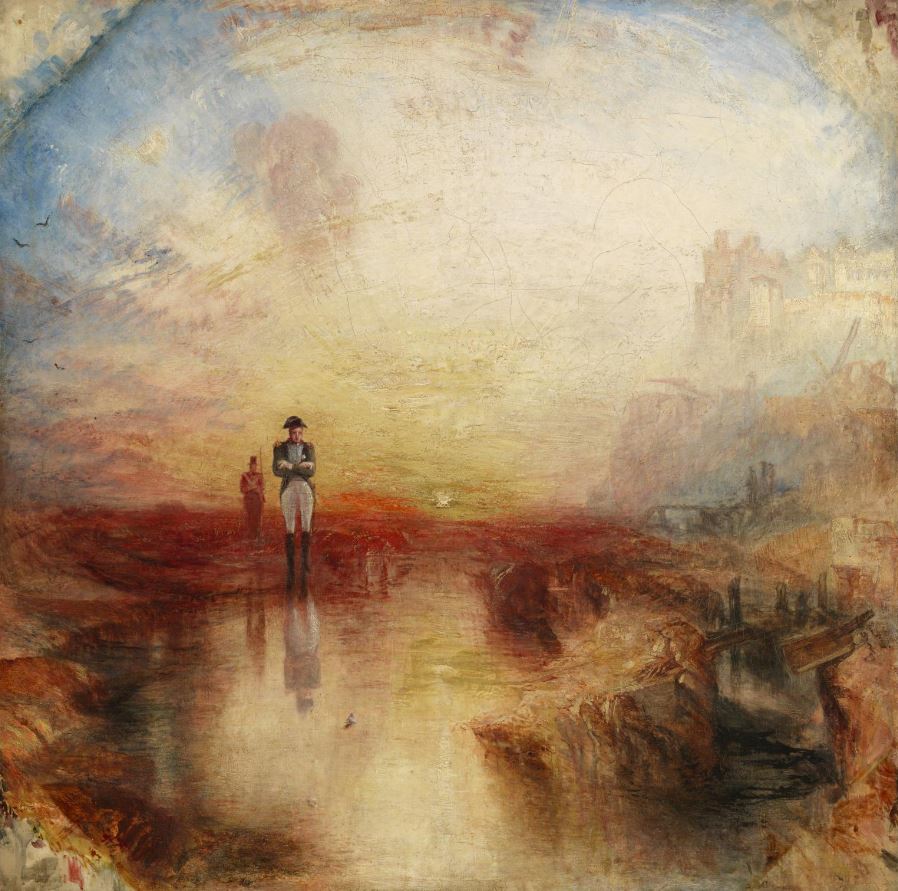
9. Napoleon Bonaparte in the coup d’état of 18 Brumaire in Saint-Cloud – François Bouchot
- Date created: 1840
- Dimensions: 401 × 421 centimeters (157.87 x 165.74 inches)
- Location: Palace of Versailles, Versailles, France
Napoleon Bonaparte in the coup d’état of 18 Brumaire in Saint-Cloud is a huge painting of Napoleon by François Bouchot (1800-1842) that depicts an important moment in the political life of the man. It depicts the moment that Napoleon seized power to become the First French Consul on November 9, 1799.
There were no victims during this event because the French military commander was an extremely popular figure at the time. This event ended the French Revolution and paved the way for him to become the First French Emperor just 5 years later.
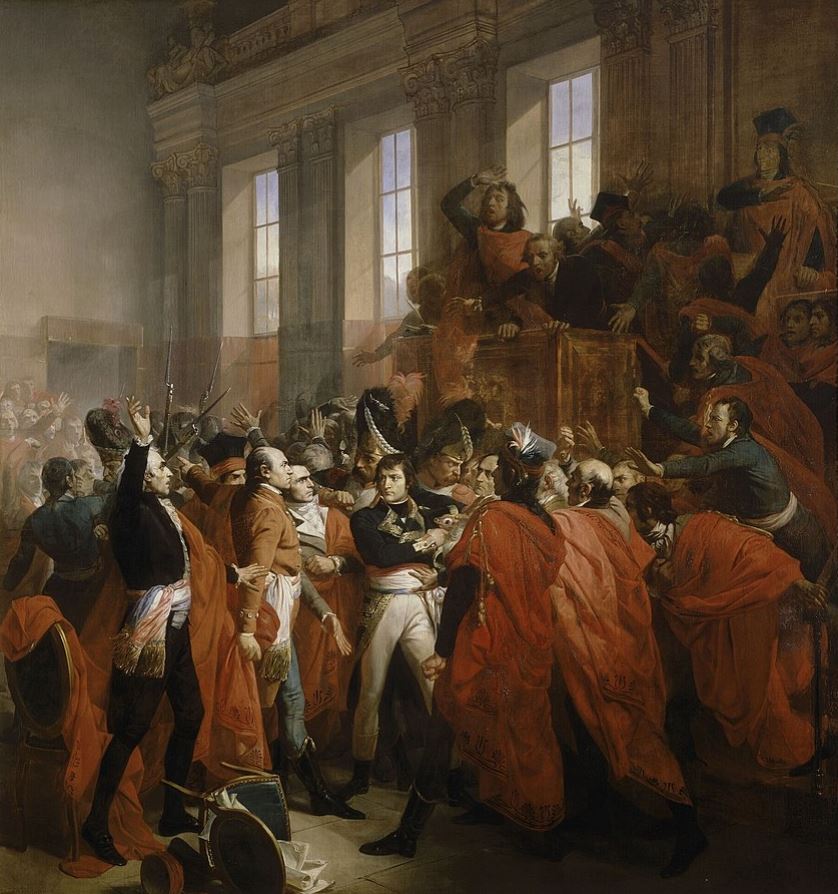
10. Napoleon after his Abdication in Fontainebleau – Paul Delaroche
- Date created: 1845
- Dimensions: 180.5 x 137.5 centimeters (71 x 54.1 inches)
- Location: Museum der Bildenden Künste, Leipzig, Germany
Napoleon after his Abdication in Fontainebleau is a painting by Paul Delaroche (1797-1856) that was completed about 3 decades after Napoleon Bonaparte signed his final abdication at the Palace of Fontainebleau. This moment took place on June 22 of 1815, shortly after he had lost the Battle of Waterloo.
The look on Napoleon’s face emphasizes the notion that he knew that this was the final blow. He had returned to Paris in the hope to gain political support, but it was not to be. A provisional government had been formed and they demanded his abdication, an offer he couldn’t refuse. The British eventually transported him to Saint Helena where he remained until he passed away in 1821.
